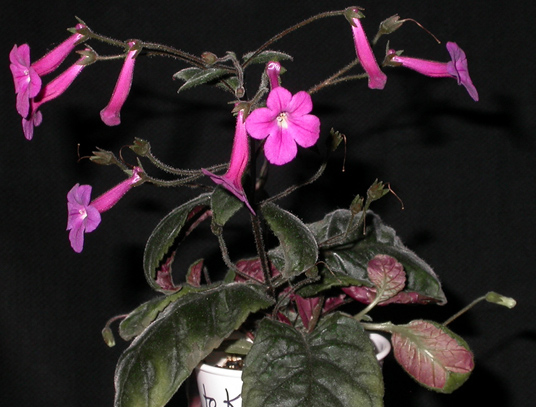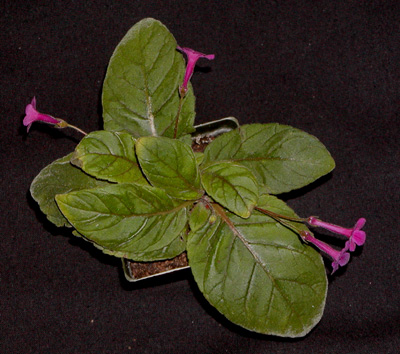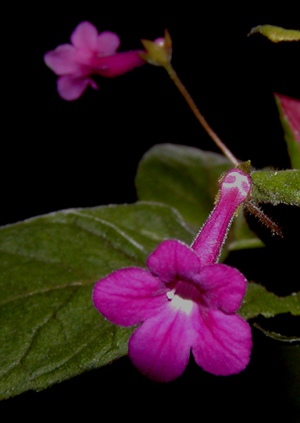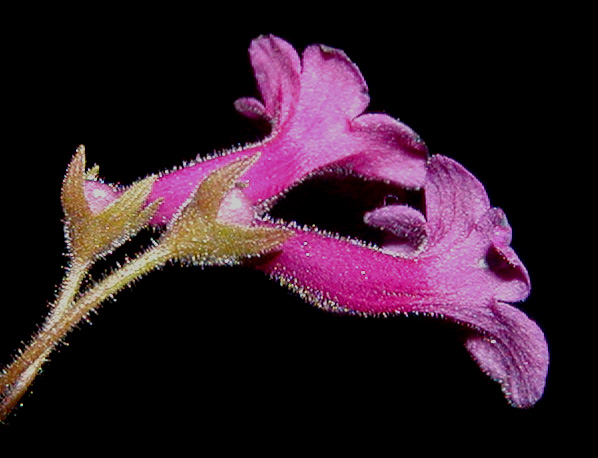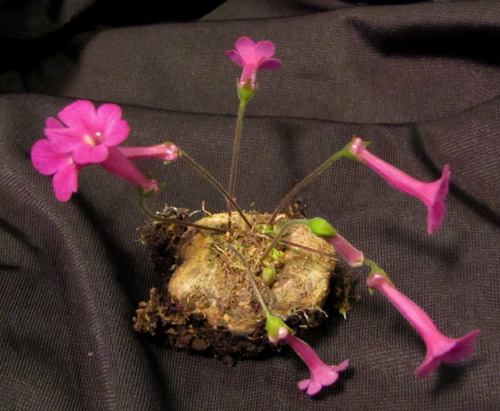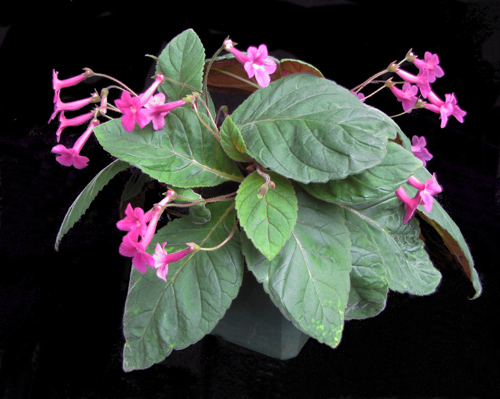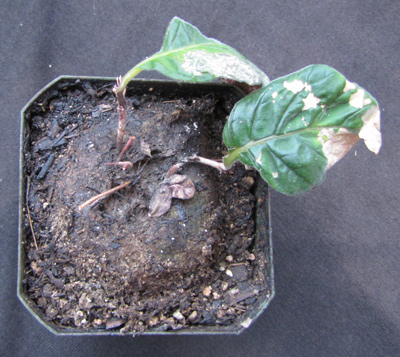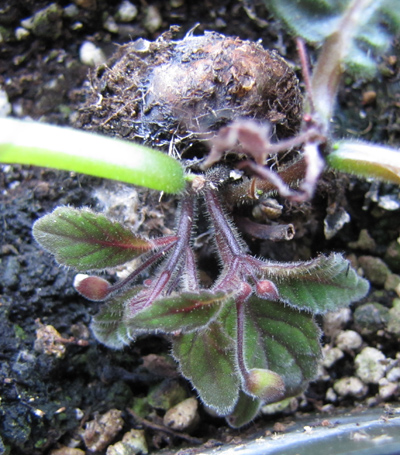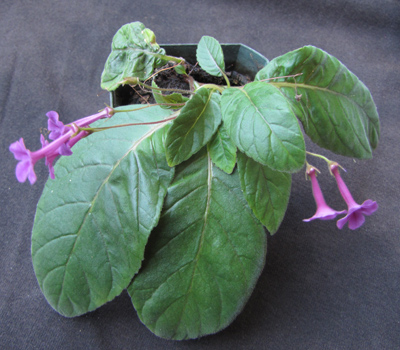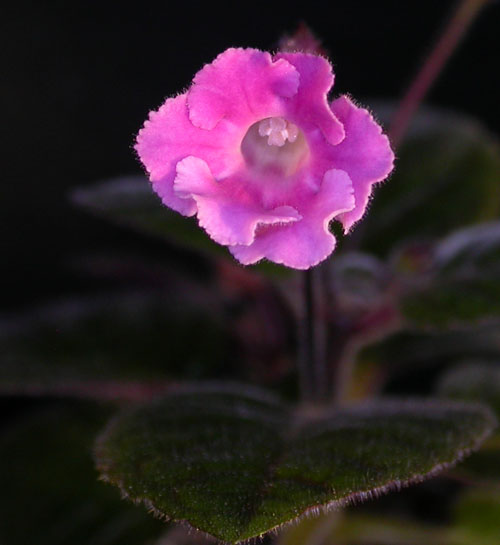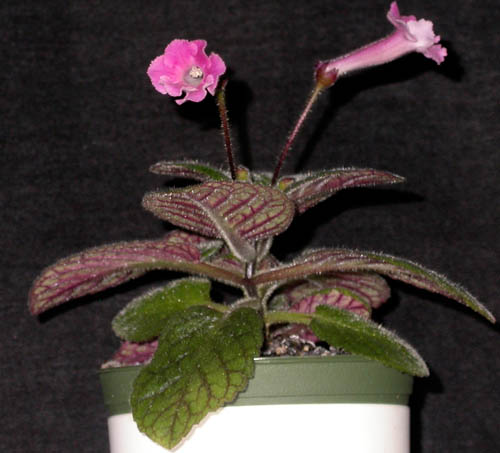Sinningia 'Heartland's Flashlight'
Dale Martens and Karyn Cichocki collaborated to cross Sinningia pusilla with S. helioana. The resulting hybrid has different blooming habits in different houses.
Karyn Cichocki sent pollen from her blooming plant of Sinningia helioana (then called Sinningia sp. "Santa Teresa") to Dale Martens, who applied it to S. pusilla. This was the result.
As far as I know, it is the first hybrid with S. helioana. Since the molecular data indicate that this species is closely related to the micro species, including S. pusilla, this plant should be fertile, but so far [as of 28 October 2010] Dale has not succeeded in setting seed on it with pollen from S. pusilla or S. muscicola ("Rio das Pedras"). But see below.
I failed to get seed by applying pollen from S. helioana. Both Dale and I observed the same thing: while the pedicel of an unpollinated flower withered right away, the ovary of a pollinated flower would begin to swell as if fertilization had succeeded, but a couple weeks later the pedicel would collapse.
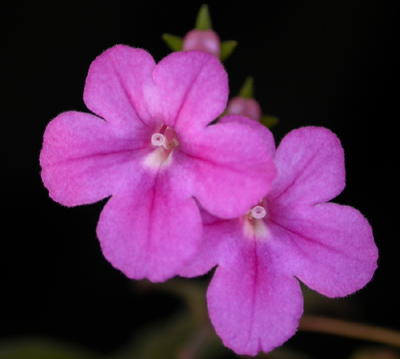
Dale's picture of her own plant
Dale has named this plant "Heartland's Flashlight". Explaining the name, she wrote, "[Karyn] gave me ST's pollen and when I had a first bud, I was so anxious to see if the bud opened that I'd go into the plant room daily around 4:00 a.m. with a flashlight to see if it had opened yet."
Flowers of S. helioana have white throats and are held facing downward at an angle. Dale says that "Heartland's Flashlight" flowers also have white in the throat and sometimes nod downward, although, as is evident from the picture, not as close to vertical as those of the pollen parent.
